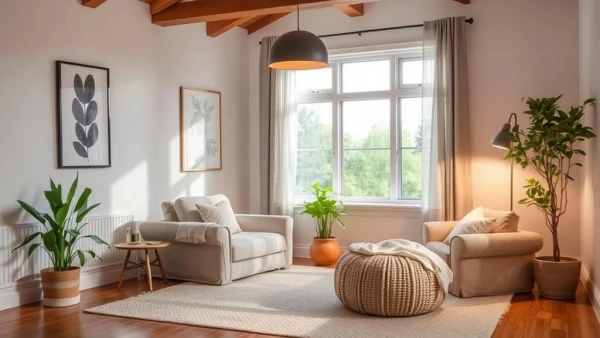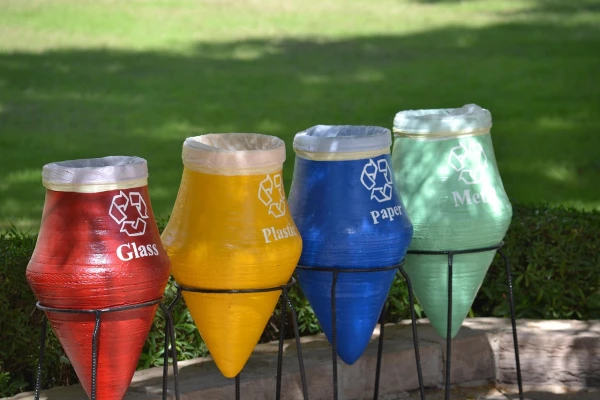Transforming your outdoor space into an eco-friendly oasis doesn't require a complete overhaul. With thoughtful planning and sustainable practices, you can create a vibrant landscape that benefits both nature and your household. Eco-friendly landscaping goes beyond aesthetics—it conserves water, supports local wildlife, and reduces chemical use while still providing a beautiful outdoor retreat. These practical approaches demonstrate how small changes in your yard care routine can make a significant environmental difference without sacrificing curb appeal or enjoyment of your outdoor space.
Start With Native Plants
The foundation of any eco-friendly landscape begins with plants naturally adapted to your region. Native species thrive with minimal watering once established, as they've evolved to survive local rainfall patterns. These plants also provide essential food and habitat for butterflies, bees, and birds that may struggle with exotic ornamentals. Group plants with similar water needs together to maximize irrigation efficiency, and consider replacing sections of thirsty lawn with native groundcovers or flowering perennials. Many native plants offer stunning seasonal interest while requiring far less maintenance than traditional landscaping choices.

Rethink Your Lawn Strategy
Traditional turf grass often demands excessive water, fertilizers, and weekly mowing with gas-powered equipment. Consider reducing lawn areas to only where you actually need them for play or recreation. Replace unused sections with drought-resistant alternatives like clover, creeping thyme, or native grass mixes that need mowing just once or twice a year. When maintaining turf, practice "grasscycling" by leaving clippings on the lawn as natural fertilizer. Set your mower blades higher to encourage deeper roots that better withstand drought. These simple adjustments can slash water use and maintenance time while keeping your yard functional.
Install Smart Water Systems
Efficient irrigation makes a tremendous difference in water conservation. Drip systems deliver water directly to plant roots with minimal evaporation loss, working especially well for shrubs and garden beds. Smart controllers adjust watering schedules based on real-time weather data, preventing unnecessary irrigation after rains. For smaller areas, consider installing a rain barrel to collect roof runoff for watering plants. Simple changes like watering early in the morning and checking for leaks in your system further reduce waste. These water-wise strategies often lead to healthier plants by preventing the fungal issues that come with overwatering.
Create Wildlife Habitats
Your yard can become a sanctuary for local fauna with a few thoughtful additions. A small pollinator garden with native flowers provides nectar sources for bees and butterflies. A birdbath or shallow water feature offers drinking and bathing spots for birds. Leaving some areas slightly wild—with leaf litter, brush piles, or undisturbed soil—creates shelter for beneficial insects and small creatures. Even urban yards can support biodiversity when designed with wildlife in mind. These habitats often become fascinating natural observatories for family members of all ages.
Use Organic Maintenance Practices
Conventional lawn chemicals harm more than just weeds—they disrupt soil health and can contaminate waterways. Switch to organic fertilizers that feed plants slowly while improving soil structure. Manage weeds naturally with corn gluten applications in spring or simple hand-pulling. Encourage beneficial insects that prey on pests by planting diverse species and tolerating minor leaf damage. If pests become problematic, try targeted solutions like insecticidal soaps rather than broad-spectrum pesticides. Healthy soil nurtured with compost creates plants naturally resistant to diseases and pests.
Incorporate Permeable Hardscaping
Traditional concrete and asphalt surfaces contribute to water runoff and heat buildup. Choose permeable alternatives like gravel, porous pavers, or decomposed granite for patios and walkways. These materials allow rainwater to soak into the ground rather than washing into storm drains. For necessary paved areas, consider open designs that incorporate grass or low-growing plants between stones. Not only do these solutions help manage stormwater naturally, but they also stay cooler underfoot during hot weather compared to solid pavement.

Start Composting Yard Waste
Instead of bagging leaves and grass clippings for disposal, convert them into nutrient-rich compost. A simple compost bin or pile transforms yard trimmings, along with kitchen scraps, into black gold for your garden. This closes the nutrient loop in your landscape while reducing landfill waste. Compost improves soil structure, helps retain moisture, and provides slow-release fertilization—all key components of sustainable gardening. Even small-space gardeners can compost using compact tumblers or worm bin systems.
A Greener Approach to Outdoor Living
Eco-friendly landscaping isn't about achieving perfection—it's about making progressively better choices for your particular space and climate. Each sustainable practice you adopt, no matter how small, contributes to healthier local ecosystems and conserves precious resources. Over time, these methods often prove easier and more cost-effective than conventional landscaping while creating yards full of life and seasonal interest. By viewing your outdoor space as part of a larger environmental system, you can enjoy a beautiful landscape that gives back to nature rather than taxing it. The bonus? You'll likely spend less time and money on maintenance while gaining a deeper eco friendly landscaping to the natural world right outside your door.




Comments